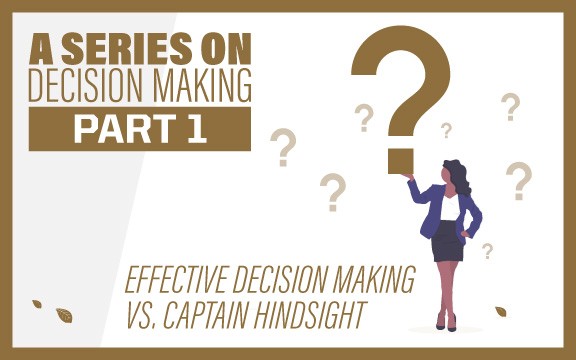 Author: Dr. Pete Hammett, Visiting Professor
Author: Dr. Pete Hammett, Visiting Professor
As I write this blog, we find ourselves facing two pandemic related realities: a world forever impacted by the COVID-19 pandemic and a world finally awakened to the suffering of a racism pandemic.
Few of us could ever imagine a worldwide quarantine, and we often wonder what life will be like when we are on the other side of the COVID-19 pandemic. Will we forever be donning face masks when we are in public? Will we be able to sit shoulder to shoulder in sports arenas cheering on our team again?
In unison of our wonders about the future, our hearts break as we witness the pain and frustration being expressed in worldwide protests against a racism pandemic. As a 61-year-old white male, I struggle to comprehend the hurt and impact of a lifetime experiencing social injustices. Yet, as I hear and agree with the calls for change, I’m lost to know what those changes might be — not only in our social, political and business systems, but equally important, the change that is needed in me.
As a behavioral scientist, there are two reactions I anticipate as the world advances efforts to combat the COVID-19 and racism pandemics. First is a false belief that we are stuck. We must be mindful not to succumb to the belief that where we are today is where we will always be. We will get past the coronavirus pandemic and our lives will return to some sense of normalcy at some point. And by God’s grace and mercy, may we witness an inflection point in history where the institutes of racism will be broken by an unyielding determination from each of us.
The other behavior I anticipate is that of second guessing. Sometimes this occurs as well-meaning advice from those who are as invested as we are in achieving a shared goal. However, more often than not, second guessing is the foil of choice by those would want to see us fail regardless of the worthiness of our cause.
A light-hearted illustration of second guessing comes from Captain Hindsight of South Park fame. Bitten by a retroactive spider, Capt. Hindsight and his sidekicks Coulda, Woulda and Shoulda “help people in need by lecturing them about what they did wrong to get into a certain accident and what methods they could have used to avoid it, instead of actually rescuing them”.
Capt. Hindsight’s second guessing example can be used as a springboard to address one of the most pervasive myths in leadership: the myth of effective decision making, specifically, a belief that a problem, crisis or opportunity can in fact be resolved with a well-timed, well-considered decision.
In reality, decisions are streams of choices that are anything but discrete events; rather, each separate decision combines as a force multiplier that, in the end, can sweep a decision maker down an unintended path. McCall and Kaplan draw this distinction when they suggest that “decision makers in an organization are floating in the stream, jostled capriciously by problems popping up, and finding anchors through action at a given time and a given place.”[1] This is a terrific analogy to grab on to as decisions are merely anchors that give us a momentary respite to catch our breath, get our bearings and ready ourselves to navigate the next wave of decisions. In fact, the only difference between a strategic decision and one more tactical is the amount of time an anchor might hold you in place before the next wave of choices comes along.
The effectiveness of decision making is equal parts of how you approach problem solving and how your organization is structured to facilitate making decisions. Consider why some organizations can address complex issues in a timely manner while others struggle with even the simplest decisions. Are there characteristics within an organization’s structure that empower people to make more timely decisions? Is an organization’s strategy so compelling that it inspires employees to act? The answer may lie in understanding the linkage between an organization’s structure, its strategy and the processes used in approaching challenging problems.
Understandably, senior executives will develop preconceived notions of where the organization’s strengths lie, how the firm stacks up against the competition, what its customers want, etc. However, these beliefs can cause executives to isolate themselves from critical external perspectives. Even when senior executives work as a collective team within their organizations, their group-thinking can create a consensus-filter that blocks consideration of external views. Senge draws this point out, saying, “many people hold the idea that when leaders and teams engage in collective inquiry (group decision making), members’ isolation will de facto be reduced. True and not true. In many cases, the better people get at wading into the hardest inquiry, the more it raises levels of isolation…”[2] Signs of this isolation can range from overconfidence all the way to overinflated, out-of-control egos.
Let me be direct. The greater the challenge and the more polarizing the environment, the more likely you will bear the burden of those who will second guess your decisions. But don’t second guess yourself. Some of the best leaders I’ve known have a remarkable ability to draw on available information and insights, make a timely call, assess its effectiveness and make needed course corrections long before others are even ready to call a meeting to discuss options.
To break free of the myth of effective decision making, leaders must create an environment that not only encourages multiple scenarios and alternative solutions, but also acknowledges that the only bad decision is one not made.
Clearly, there is much more to say than can be captured in a single blog. Stay tuned for more to come in this multi-part series.
- Part 2 – Views on Decision Making
- Part 3 – How Senior Execs Approach Decision Making: A Look at Personality Data From the C-Suite
- Part 4 – Personal Observations on Decision Making
- Part 5 – A Call to Action
Footnotes
[1] McCall, M. and Kaplan, R. Whatever It Takes – the Realities of Managerial Decision Making. Englewood Cliffs: Prentice Hall, 1990.
[2] Senge, P. and Joni, S. Outside Insight: Balancing Private and Public Inquiry. 2005. Available: www.reflections.solonline.org. November 1, 2005.
:



